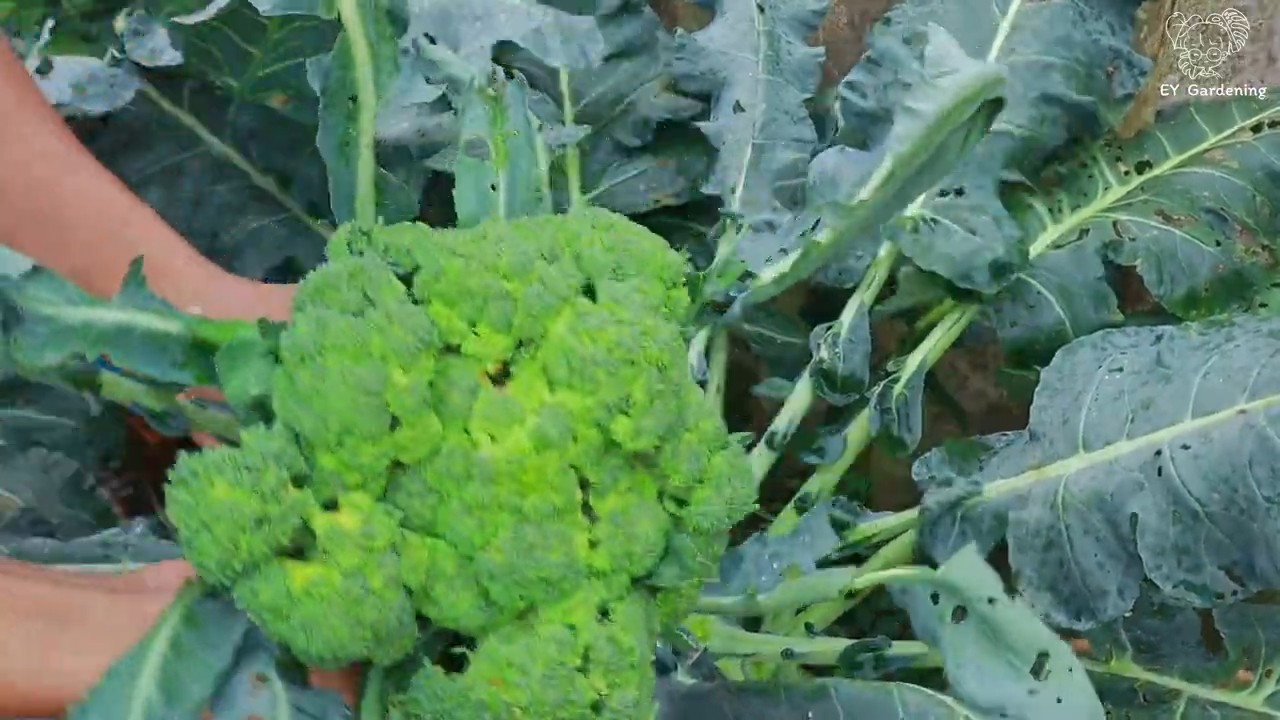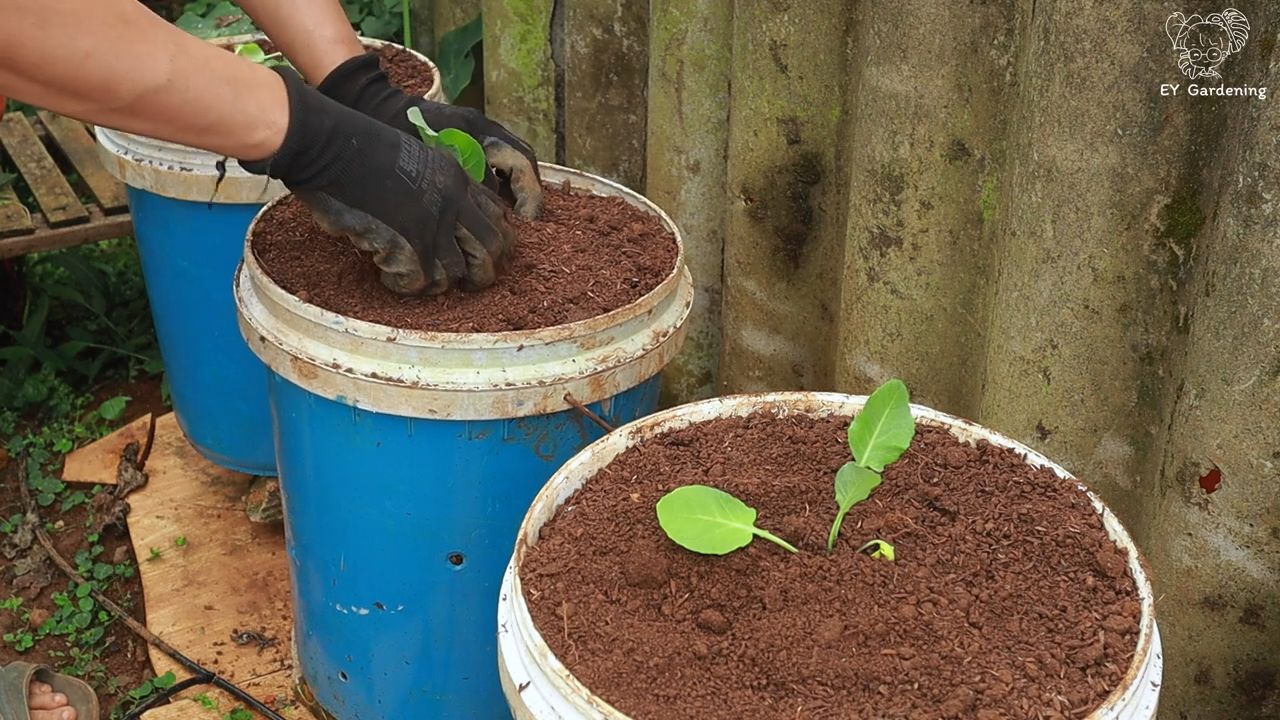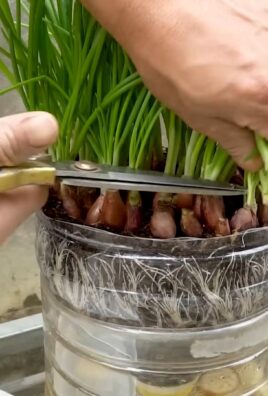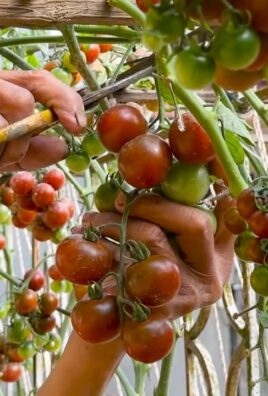Companion Planting Cauliflower Broccoli: Ever feel like your cauliflower and broccoli are locked in a silent battle for survival in your garden? I know I have! It’s frustrating to pour your heart and soul into nurturing these veggies, only to see them struggle. But what if I told you there’s a secret weapon, a time-tested technique that can transform your garden into a thriving ecosystem where your cauliflower and broccoli not only survive but flourish?
The concept of companion planting isn’t new. In fact, it’s been around for centuries! Indigenous cultures around the world have long understood the intricate relationships between plants, using this knowledge to create self-sustaining and bountiful gardens. Think of it as nature’s way of lending a helping hand. It’s a beautiful blend of tradition and practical gardening wisdom.
Why is companion planting cauliflower broccoli so important? Well, these brassicas can be a bit demanding. They attract pests, deplete soil nutrients, and sometimes just need a little boost to reach their full potential. That’s where companion plants come in! They can act as natural pest repellents, improve soil health, and even provide shade or support. This DIY guide will walk you through the best companion plants for your cauliflower and broccoli, offering simple, effective strategies to maximize your harvest and create a healthier, happier garden. Get ready to unlock the secrets to a thriving vegetable patch!

The Ultimate Guide to Companion Planting Cauliflower and Broccoli for a Bountiful Harvest
Hello garden friends! I am so excited to introduce you to the fascinating world of companion planting for cauliflower and broccoli today. Believe me, it’s not just a trend, but a proven method to maximize your harvest, naturally repel pests, and create a healthier, more vibrant garden. Let’s dive in together!
What is Companion Planting and Why is it Important?
Companion planting is basically planting different types of plants next to each other to benefit from their mutual advantages. Some plants can repel pests, others improve the soil, or even serve as natural trellises. For cauliflower and broccoli, both of which belong to the brassica family, the right companion planting can mean the difference between a meager and a lush harvest.
Why is companion planting so important for cauliflower and broccoli?
- Pest Control: Some companion plants deter pests that love cauliflower and broccoli, such as cabbage whites, aphids, and flea beetles.
- Soil Improvement: Certain plants can introduce nutrients into the soil that cauliflower and broccoli need.
- Space Optimization: By skillfully combining plants, you can make the most of the available space.
- Increased Yields: Healthy companion planting often leads to larger and more numerous harvests.
The Best Companion Plants for Cauliflower and Broccoli
Okay, let’s get specific. Here are my top recommendations for plants that are excellent companions for cauliflower and broccoli:
- Aromatic Herbs: Rosemary, sage, thyme, and peppermint. These herbs emit a strong scent that deters many pests.
- Marigolds: These pretty flowers are not only decorative but also natural pest controllers. They attract beneficial insects and repel nematodes.
- Nasturtiums: Nasturtiums are a true all-rounder! They attract aphids, but distract them from your precious cabbage plants. Plus, they are edible and add a spicy note to salads.
- Garlic and Onions: These alliums are known for their deterrent effect on many pests, including cabbage flies and aphids.
- Dill: Dill attracts beneficial insects like ladybugs and hoverflies, which eat aphids and other pests.
- Spinach and Lettuce: These fast-growing leafy greens can be planted between the cabbage plants and help keep the soil cool and moist.
- Beans and Peas: These legumes fix nitrogen in the soil, which benefits cauliflower and broccoli.
- Chamomile: Chamomile attracts beneficial insects and is said to promote the growth of cabbage plants.
Plants You Should Avoid
Not all plants are good neighbors for cauliflower and broccoli. Here are some you should better avoid:
- Strawberries: They can transmit diseases that affect cabbage plants.
- Tomatoes: They compete for nutrients and can inhibit the growth of cauliflower and broccoli.
- Pumpkin and other cucurbits: They can also compete for nutrients and attract pests that also attack cabbage plants.
Step-by-Step Guide to Companion Planting Cauliflower and Broccoli
Okay, now let’s get down to it! Here is a detailed guide on how you can create your own companion planting setup for cauliflower and broccoli:
1. Planning is Everything!
- Determine your location: Cauliflower and broccoli need at least 6 hours of sunlight per day. Choose a location with well-draining soil.
- Prepare the soil: Loosen the soil and remove stones and weeds. Mix in compost or well-rotted manure to enrich the soil with nutrients.
- Create a planting plan: Think about which companion plants you want to use and where you want to place them. Consider the size of the plants when they are fully grown.
2. Sowing or Seedlings?
- Sowing: You can sow cauliflower and broccoli directly into the bed, but I recommend starting them in seed trays. This gives them a head start and protects them from pests.
- Seedlings: If you buy seedlings, make sure they look healthy and strong.
3. Planting
- Spacing: Plant cauliflower and broccoli about 45-60 cm apart.
- Planting holes: Dig holes that are slightly larger than the root balls of the plants.
- Planting: Carefully place the plants in the holes and fill them with soil. Gently press the soil down.
- Watering: Water the plants thoroughly.
4. Adding Companion Plants
- Herbs: Plant aromatic herbs like rosemary, sage, and thyme near your cabbage plants.
- Marigolds and Nasturtiums: Plant these flowers between the cabbage plants or at the edge of the bed.
- Garlic and Onions: Plant garlic and onions in rows between the cabbage plants.
- Spinach and Lettuce: Sow spinach and lettuce between the cabbage plants to keep the soil cool and moist.
- Beans and Peas: Plant beans and peas on trellises near your cabbage plants.
5. Care and Maintenance
- Watering: Water your plants regularly, especially during dry periods.
- Fertilizing: Fertilize your plants every few weeks with an organic fertilizer.
- Weeding: Keep the bed free of weeds to minimize competition for nutrients.
- Pest control: Check your plants regularly for pests and take action if necessary. You can use insecticidal soap or neem oil, for example.
- Mulching: Mulch the bed with straw or wood chips to keep the soil moist and suppress weeds.
Additional Tips for Successful Companion Planting
- Observe your plants: Watch for signs of pests or diseases and act accordingly.
- Experiment: Try different combinations of companion plants to find out what works best in your garden.
- Document your experiences: Take notes on which companion plants work well and which do not. This will help you optimize your companion planting over time.
- Be patient: It can take some time for the benefits of companion planting to show. Don’t give up!
Avoiding Common Mistakes
- Planting too closely: Give your plants enough space to grow.
- Wrong companion plants: Inform yourself about which plants get along well with each other.
- Neglecting care: Water, fertilize, and weed regularly.
- Ignoring pests and diseases: Check your plants regularly and take action if necessary.
I hope this guide has inspired you to try companion planting for cauliflower and broccoli. With a little planning and effort, you can have a healthier, more productive garden.

Conclusion
So, there you have it! Companion planting cauliflower and broccoli isn’t just some old wives’ tale; it’s a scientifically sound and incredibly effective way to boost your garden’s health and productivity. By strategically pairing these brassicas with beneficial neighbors, you’re creating a mini-ecosystem that naturally deters pests, attracts pollinators, and even improves soil quality.
Why is this a must-try? Because it’s a game-changer for any gardener, whether you’re a seasoned pro or just starting out. Imagine harvesting plump, vibrant cauliflower heads and tender broccoli florets, all while using fewer pesticides and relying more on the power of nature. That’s the promise of companion planting.
But don’t stop there! Experiment with different combinations to find what works best for your specific garden conditions and climate. Try interplanting with herbs like rosemary or thyme for added pest control, or add a border of marigolds to attract beneficial insects. The possibilities are endless!
We’ve covered the basics, but remember that gardening is a journey of continuous learning and adaptation. Observe your plants closely, take notes on what works and what doesn’t, and don’t be afraid to tweak your approach as needed.
Ultimately, the success of companion planting hinges on your willingness to experiment and learn from your experiences. So, grab your gardening gloves, gather your seeds, and get ready to witness the magic of companion planting firsthand.
We are confident that you will find that companion planting cauliflower and broccoli will not only improve your yield but also enrich your gardening experience.
We’re eager to hear about your results! Share your experiences, successes, and even your challenges in the comments below. Let’s build a community of gardeners who are passionate about harnessing the power of nature to grow healthy, delicious food. Happy gardening!
Frequently Asked Questions (FAQ)
What exactly is companion planting, and why is it beneficial for cauliflower and broccoli?
Companion planting is the practice of planting different crops in close proximity to each other to benefit one or both plants. These benefits can include pest deterrence, attracting beneficial insects, improving soil health, providing shade or support, and even enhancing flavor. For cauliflower and broccoli, companion planting can be particularly helpful in deterring common pests like cabbage moths, aphids, and flea beetles, while also attracting pollinators and improving nutrient uptake.
Which plants are the best companions for cauliflower and broccoli?
Several plants make excellent companions for cauliflower and broccoli. Some of the most effective include:
* **Aromatic Herbs:** Rosemary, thyme, sage, and oregano repel cabbage moths and other pests. Their strong scents confuse insects, making it harder for them to find your brassicas.
* **Alliums:** Onions, garlic, and chives also deter pests with their pungent aroma. They can help protect against aphids, cabbage root flies, and other common brassica pests.
* **Marigolds:** These cheerful flowers attract beneficial insects like ladybugs and hoverflies, which prey on aphids and other pests. They also release compounds into the soil that can deter nematodes.
* **Nasturtiums:** These edible flowers act as a trap crop, attracting aphids away from your cauliflower and broccoli. They also attract beneficial insects and can improve soil health.
* **Legumes:** Peas and beans fix nitrogen in the soil, which is essential for healthy plant growth. They can also provide shade and support for taller brassicas.
* **Dill:** Dill attracts beneficial insects like lacewings and ladybugs, which prey on aphids and cabbage worms.
Are there any plants that should be avoided when companion planting cauliflower and broccoli?
Yes, some plants can negatively impact the growth of cauliflower and broccoli. Avoid planting them near:
* **Strawberries:** They can stunt the growth of brassicas.
* **Tomatoes:** They compete for nutrients and can attract pests that also affect cauliflower and broccoli.
* **Members of the Brassica Family:** Planting too many brassicas together (e.g., cauliflower, broccoli, cabbage, kale) can increase the risk of pest and disease problems.
How close should I plant companion plants to my cauliflower and broccoli?
The ideal spacing depends on the specific plants you’re using and their mature size. As a general rule, plant companion plants within 6-12 inches of your cauliflower and broccoli. For taller plants like rosemary or dill, consider planting them slightly further away to avoid shading your brassicas. Observe your plants closely and adjust the spacing as needed.
Can companion planting completely eliminate the need for pesticides?
While companion planting can significantly reduce the need for pesticides, it may not eliminate it entirely, especially in areas with heavy pest pressure. However, by creating a healthy and balanced ecosystem in your garden, you can minimize pest problems and rely less on harmful chemicals.
How do I know if my companion planting efforts are working?
Observe your plants regularly for signs of pest damage or disease. If you notice fewer pests and healthier plants compared to previous years, it’s a good indication that your companion planting efforts are paying off. You may also notice an increase in beneficial insects in your garden.
What if I don’t have a lot of space for companion planting?
Even if you have limited space, you can still benefit from companion planting. Consider planting herbs like thyme or rosemary in containers and placing them near your cauliflower and broccoli. You can also interplant smaller companion plants like marigolds or nasturtiums directly among your brassicas. Every little bit helps!
Does companion planting affect the taste of cauliflower and broccoli?
In some cases, companion planting can enhance the flavor of cauliflower and broccoli. For example, planting mint nearby is rumored to improve the taste of cabbage. However, the effects are often subtle and may vary depending on the specific plants and growing conditions.
Can I use companion planting in raised beds or containers?
Yes, companion planting is just as effective in raised beds and containers as it is in traditional gardens. In fact, it can be even more beneficial in these settings, as it helps to create a more controlled and balanced environment for your plants.
What other factors should I consider when growing cauliflower and broccoli?
In addition to companion planting, other important factors to consider when growing cauliflower and broccoli include:
* **Soil:** Cauliflower and broccoli prefer well-drained soil that is rich in organic matter.
* **Sunlight:** They need at least 6 hours of sunlight per day.
* **Water:** Water regularly, especially during dry periods.
* **Fertilizer:** Fertilize regularly with a balanced fertilizer.
* **Pest and Disease Control:** Monitor your plants regularly for pests and diseases and take appropriate action if necessary.
By combining companion planting with good gardening practices, you can create a thriving garden that produces healthy and delicious cauliflower and broccoli.




Leave a Comment